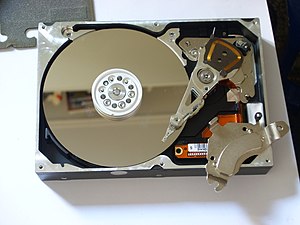
It may have been a while since you considered using Windows' built-in tools for backing up your data, but for the average user with media and crucial file needs,
Windows 7's default backup features look promising.
The strengths of Windows' own system are its ability to leverage the built-in "Shadow Copy" features to restore previous versions of individual files or folders, and make only iterative backups when necessary—if only part of a massive file has changed, only that part has to be transferred and copied over. It also supports backup to shared network space and external drives, but you'd hope any backup utility worth its salt would do so. In a pretty real way, this backup system is kind of like Leopard's Time Machine—but without all the eye candy.
Let's take a walk through the basics of Windows 7's backup system, and highlight the changes since Vista:
The first screen is pretty self-explanatory, but less tech-inclined users get a link to best practices for external backups (how they got to this screen in the first place is somewhat impressive, though):
Hit the "Add Network Location" button below that listing of non-internal drives, and you get a straight-forward directory and user/pass input dialog.
Vista asked backup users whether they wanted to back up "files or your entire computer." To those looking for simplicity, that's a pretty wide disparity to choose between—the entire barn or your selection of individual hay straws. Windows 7 breaks your options down into whether or not you want a restore-friendly system image, any particular data folders you want to save, and if you want to leave the system stuff to Windows' discretion or your own box-checking whims:
If you take the "Let me choose" route, you get to pick the folders and whether you want a system image for restoring:
If you opt for "Let Windows choose," you're told that every user gets their file backed up, and a system image is thrown in by default:
Either way you roll, you're asked to set up a regular schedule for your backups—daily, weekly, or monthly, at whatever hour you wish:
That's the end of the settings-fiddling, at least for now. Now onto the Backup and Restore Center, which is easy to get to from a start menu search or the Control Panel. It shows you the drive you've selected to be your backup receptacle, how much space is left on it, how much space is being used by Windows Backup, and, if you're currently running a backup, how far into the process you are. There's also some plain English about your last backup and what it had in it, but Windows 7 refused to believe my external drive had a backup finished not 20 minutes ago (did I need to set up a schedule to force recognition?)

The breakdown in space usage, accessed by choosing "Manage Space" from the main Backup and Restore window, is just about my favorite aspect of Windows-based backups. Unless you bought an external hard drive for the sole purpose of clean, conservative backups, you probably use it for all kinds of other stuff as well—downloads, media sharing/streaming, file transfers, and the like. Windows 7's backup gives you access to your previous system image files for deletion, shows exactly how much space is used by each of its backup components, and, knowing that it's only going to copy the new bits of files after a first backup, a pretty decent picture of what space you'll need to keep open for it:

None of this is to say that Windows' baked-in backup center is a substitute for a smart, powerful backup utility, of course. But for the relatives you're obliged to provide tech support for, and anyone who really just has their standard folders and not much else, it's a workable solution. For those looking for something with a bit more juice and extensibility, check out our readers' picks for the
five best Windows backup tools and
file syncing tools.
What do you wish the built-in backup system in Windows 7, or farther ahead, could do on its own? Have you been getting by with Backup and Restore in Vista just fine? Tell us about it in the comments.
 Image via Wikipedia
Image via Wikipedia













